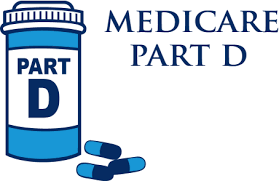The U.S. Department of Labor’s (DOL) Bureau of Labor Statistics (BLS) recently published a report examining employee benefits in the country. The estimates in the report are from the BLS’ National Compensation Survey, which measures costs and trends related to employer-provided benefits.
The survey represents more than 146 million civilian workers in private industry and state and local government. This article summarizes the main points of the DOL’s Employee Benefits in the United States release.
Medical Care Benefits for Civilian Workers
The survey provides estimates on the percentage of workers with access to and participating in employer-provided health care benefits as of March 2024, as well as estimates for medical care premiums. The statistics for private industry and state and local government were published separately and then combined to measure the civilian economy, as follows.
While 89% of full-time civilian workers had access to medical care benefits, just 26% of part-time workers did. The take-up rate was 66% for full-time workers and 46% for part-time workers. For private industry workers enrolled in medical plans with single coverage, the employer share of premiums was 80%, and the employee share was 20%. For family coverage, employers paid 68% of premiums for private industry workers, with employees covering 32% of premiums.
Participating state and local government workers with single coverage had 86% of premiums covered by employers and 14% by employees. Employers paid 71% of premiums for family coverage, with employees covering 29% of such plans.
Wages for Civilian Workers
The median hourly wage for civilian workers was $25, with $24 for private industry workers and $33.16 for state and local government workers. Industry research suggests that employers will continue increasing wages to keep up with inflation and remain competitive in the labor market.
Benefits for Private Industry Workers
Most civilian workers (more than 126 million) surveyed work in the private industry. The following figures represent how many of those workers had access to certain employee benefits as of March 2024:
- Medical care benefits: 72%
- Dental benefits: 43%
- Vision benefits: 28%
- Retirement benefits: 72%
- Paid sick leave: 79%
- Paid holidays: 81%
- Paid personal leave (leave used for reasons important to the individual employee but not otherwise provided by other forms of leave, such as sick leave, vacations and holidays): 49%
On average, small organizations (those with one to 99 employees) offered 10 annual paid vacation days for workers after one year of employment, 14 days after five years, 16 days after 10 years and 17 days after 20 years. Large organizations (those with 500 or more employees) offered, on average, 14 annual paid vacation days after one year of employment, 18 days after five years, 21 days after 10 years and 24 days after 20 years.
Benefits for State and Local Government Workers
Of the civilian workers surveyed, nearly 20 million worked in state and local government. The following figures represent how many of those workers had access to certain employee benefits as of March 2024:
- Medical care benefits: 89%
- Dental benefits: 60%
- Vision benefits: 39%
- Retirement benefits: 92%
- Paid sick leave: 92%
- Paid holidays: 68%
- Paid personal leave: 62%
Conclusion
While the best methods for implementing benefits vary by industry, workplace size and location, being aware of current benefits trends can guide organizations as they strategize and take action. Recognizing trends and take-up rates can help employers respond with meaningful benefits to help keep their workforces healthier and happier.
Employers should continue to monitor benefits trends, employee utilization and spending. Contact us for more resources at Inspire Workforce.





